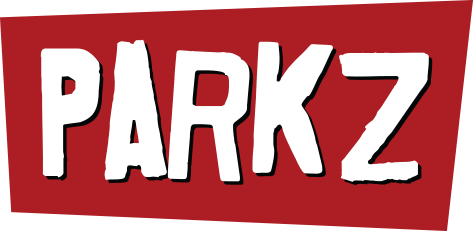Leaderboard
Popular Content
Showing content with the highest reputation on 12/04/18 in all areas
-
Occasionally, looking at an overhead view may help to visualise it. RED line is the VR track RED shadowing is a broad access area surrounding the track - not the ride envelope, but a reasonable assumption of space needed to demolish the attraction PINK line is the likely route for demolition vehicles and similar to access the area BLUE area is the Penguin Point exhibit (you might be thinking of Penguin Encounter at the front of the park) GREEN area is Ray Reef YELLOW area is Storm Coaster. I think given the maintenance dates, its fairly obvious what's happening... although Skeet's updated dates that ive just seen might indicate differently...2 points
-
Prepare for a long post... I've always felt the hype of multi-sport events causing chaos in the host city during the event is not just exaggerated but overly exaggerated. Personally, I believe a simple way to tell how chaotic a multi-sport event will be in a host city would be if airlines/the local airport couldn't cope with the extra demand as then the rest of the city probably wouldn't either. Mind you, that's not based on scientific evidence...yet. I'm just using the logic, in the case of the Gold Coast, that if there aren't enough flights to the city then there is likely not enough public transport out of the city's airport and around the city with not enough accommodation in the city either. I haven't heard any complaints about Gold Coast Airport yet, Gold Coast's public transport has been running at 99% efficiency (Mind you, this could be because the locals have left) & there is plenty of accommodation still available. Accommodation on the Gold Coast can take a maximum of around 43,000 people at any point in time. If the Gold Coast couldn't handle that during a Commonwealth Games, there is no point in bidding for these events unless they built new accommodation. The normal occupancy rate in the Gold Coast in April is 53% (so about 23,000 people - and I'm not using the room occupancy rate here by the way). If the Gold Coast couldn't cope with a 100% occupancy rate, why build so much accommodation in the first place? (The highest it gets is around 66% in January) The athletes/officials stay in a new purpose-built village and they only number about 7000 people (about 5000 athletes). Add the athletes' families (say, 3 people each?) as spectators, that's roughly 15,000 people in Gold Coast accommodation (about 35% occupancy rate). Then add the amount of general interstate/international visitors to that figure. This is where it gets difficult. According to XX Commonwealth Games: Glasgow 2014’s Chief Communications Officer in the official report of the XX Commonwealth Games - Glasgow 2014: So essentially, locals make up the majority of ticketholders (How many of you have ever said to yourself "I'm going to <insert multi-sport event here> for a holiday" when it's not held in your city?) thus making most of the remaining accommodation likely vacant meaning the occupancy rate could be around the same as it usually is or even less than usual. For Glasgow, the 3-hour driving radius was a 200km radius which included everywhere within that radius except Northern Ireland & the Isle Of Man (as travelling between there & Glasgow takes more than 3 hours). For the Gold Coast, the same radius applies still so that would include everyone between Gympie & Grafton and out west to Warwick. Glasgow's population catchment in that 200km radius should be around 7 million people while the Gold Coast has a catchment of around 3 million people. However, that quote above was immediately followed by: Well, if the Gold Coast has significantly less people to sell tickets to than Glasgow did, that's a problem surely? So what did Glasgow do in 2014? That should work, right? Well according to Glasgow 2014's Head of Marketing & Advertising in the same report: And as it turned out, the Gold Coast did the complete opposite by encouraging the local population to leave the city for 11 days when, in fact, they would be the main purchaser of tickets. Glasgow 2014 managed to sell 96% of their tickets and the Gold Coast, as of April 3, had sold 88% of their tickets, which is a paradox - how can they sell nearly all their tickets despite their main audience leaving in droves? This could be because 'tickets purchased' doesn't equate to 'number of Commonwealth Games visitors'. You can have people purchase tickets to several events over all 11 days of the Games after all. Earlier on in the Glasgow 2014 report, it mentions: Greater Glasgow, in categorizing statistically, is the same as Gold Coast-Tweed Heads. With the Greater Glasgow population about 1.2 million, that would mean 400,000 Greater Glasgow residents were initially interested in purchasing tickets. If each person bought 1 ticket per day of the Games, they would sell triple the amount of tickets on offer! Gold Coast-Tweed Heads' population is about 700,000 and based on Glasgow's research, should mean 200,000 Gold Coast-Tweed Heads residents were initially interested in purchasing tickets. If each of those 200,000 people bought 1 ticket per day of the Games, they would sell double the amount of tickets on offer! So if there are 1.2 million tickets on offer, you only need 100,000 interested residents & 1 ticket per day from all of them to see all tickets being sold. As pointed out in the quote above, there are people not from the host city but located within the 200km radius that are interested in buying tickets. Adding these would include a total of about 1.6 million interested ticket purchasers for Glasgow (This would mean about half a million would have to attend one of the free sporting events or sadly, miss out on being at the sport all together) while for the Gold Coast, taking into account the rest of the 200km radius would see a total of around 900,000 interested ticket purchasers - meaning around 200,000 tickets would still be available, which on April 3 was pretty much the case. It doesn't help encouraging the host city's residents to leave for 11 days as due to the lack of general interstate/international visitors, there is no difference in accommodation occupancy rates and combined with the locals leaving, in turn, results in a temporary population decline of -65% for the Gold Coast-Tweed Heads region! So more than half of the host city has left due to the encouragement...leaving the city with no 'buzz' except around Games venues. And no doubt, this means the Gold Coast-Tweed Heads economy hasn't improved (which it did pre-Games & could post-Games. Well, actually it will improve post-Games as the locals will return ) or stayed the same (which is what should have happened during the Games due to population levels remaining roughly the same) but in fact, declined...massively. Thankfully, the Games only go for 11 days. Regardless, GOLDOC should explain how they got it so wrong. No doubt people would have used the Games as an opportunity to go on holiday anyway so there would have been a small decline anyway but nowhere near as noticeable. I understand traffic is pretty terrible nowadays on the Gold Coast so if there is 1 lesson the Gold Coast could learn from these Games, it is to fix up your transport network. The city wouldn't be in the position it is now otherwise as multi-sport events probably don't affect the host city as much as it is made out. It is just the pressure these events come with to showcase a functional city that results in politicians & the like trying to remove all of a city's logistical problems for just about 2 weeks. If there is a logistic problem with the host city during the Games, it's likely because the city already has that problem. No doubt, had locals stayed for these Games, the M1 traffic jams would have continued anyway. If politicians & the like want a 'functional city' for just about 2 weeks & no other time, are they really catering to their electors in the first place? They may harp on about 'legacy' but the legacy just doesn't happen except in the form of memories - no massive economic boost, sporting venues become unused etc. (due to those sports not being part of that area's culture - thankfully, the Gold Coast only built 1 completely new venue). Gold Coast 2018's 'legacy' will just be Coomera Indoor Sports Centre, the Athletes Village, the numerous sporting venue upgrades/reconstructions & maybe a small tourism boost post-Games (maybe in 9 months to a year) but as with all multi-sport events, the hype over the 'legacy' they leave are overly exaggerated resulting, in the future, the host city asking itself the question (which the Gold Coast may already be asking) - was it all worth it? The answer: Probably not. After viewing the Network 7's TV coverage over the past few days, the theme parks have received zero promotion during their coverage so far. The most that counts is a few moments of SW's monorail & Storm Coaster seen operating in the distance during triathlon events. There is even no TV commercials from the theme parks either. I don't know if international broadcasters have been visiting the parks to promote the theme parks internationally but either way, based on Network 7's TV coverage alone, there won't be a post-Games increase in interstate visitors to the theme parks as non-Queenslanders could be forgiven for forgetting there were major theme parks on the Gold Coast as Network 7 hasn't shown them. Just skyscrapers - nothing else. Anyway, after this long post, here is a theme park question - how are the theme parks coping with this temporary downturn?2 points
-
They were running two trains over the weekend. So either it's a lot quieter than expected, or something did happen during the week to remove it. Were they still running 2 trains at superman and road runner? If its quiet they normally drop back to one on these two, not much point sending virtually empty trains.1 point
-
it's unusual for them to 'add a train' during the day (this tends to blow out the queue further as the ride is shut down for a considerable period whilst doing so). Usually they 'predict' their traffic for the day, and decide prior to opening how many trains they will run that day. Usually they stick by that decision on all but the rarest of occasions when the park gets busier. it's not indicative of a problem with a train - usually just that the park's attendance spiked higher than they anticipated.1 point
-
1 point
This leaderboard is set to Brisbane/GMT+10:00


